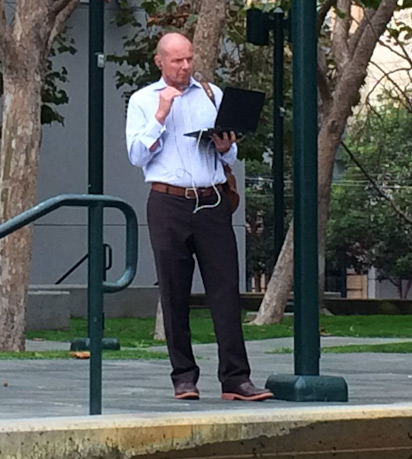‘Tis the season of surprises. If you think about it, it’s a main ingredient for the way we’ve cooked up our cultural take on Christmas. There’s the surprise of opening presents. The surprise of Santa’s stealth run. And for parents our age, there’s the surprise of seeing which kids come home for the holidays. (Think Folger’s “Peter!”)
But I haven’t had time for the unexpected. With a travel schedule that is allowing me one full day at home for the first three weeks of December, I have been doing my best to eliminate anything unpredictable. I have enough trouble trying to figure out if I am sinking or swimming as I try to keep up.
Then, this morning, preparing to leave my hotel in Sugar Land, Texas, I had a few minutes before catching an Uber, so I wandered into the “town square” of this a-bit-too-cute, designed community.
And just like a playful elf, the unexpected sneaked up and startled me. Just to see if it could draw out a smile.
First was the unlikely sight of fall colors in December.
Then, there was the magic trick of a floating present.
Saving the best for last old elf himself appeared before me. On a bench.
And that did make me laugh.
Delight is such a precious commodity. None of us can get enough of it. Delight is the by-product of surprise, when that which sneaks up on us is right or true or pure or lovely. Like my encounter, earlier this week with the son of one of the participants in our event. I stretched out on the ballroom floor to draw for him. Tomas sat down next to me. (He was surprised and amused by my bald pate. His mortified parents apologized profusely.) But I was the one delighted – by the sweetness of a little child.
Isn’t that, after all, what makes this season so wonderfully surprising? Not that tired truism that “Christmas is for children.” But that Christmas is about that one Child. The most unexpected gift of all.
With delight waiting in the wings.





















































